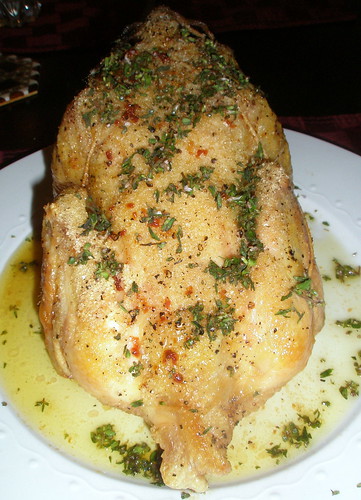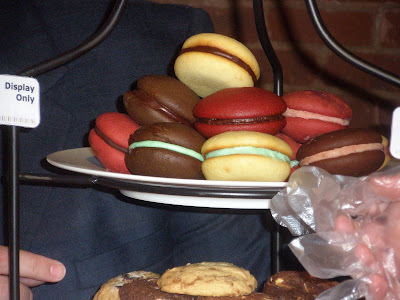As you read this, I am flying across the country to bring in the new year in the food-lover mecca of San Francisco. While 2009 was a hard year in many ways, it was a wonderful year for this blog and brought me some foodie moments that have had a lasting effect on me. My top 5 food memories of 2009, in no particular order are:
- My anniversary at Gramercy Tavern: I went to Gramercy Tavern to celebrate my anniversary with the Significant Eater. From the setting to service to the food to the lemon muffins the restaurant sent us home with for the next morning, the night was perfect. For 2010, I resolve to treat others with just as much respect as Danny Meyer gives his patrons.
- Valentine's Day at Momofuku Ko: By some stroke of Cupid, I was able to secure a Valentine's Day reservation at David Chang's 12-seat, 10-course prix-fixe restaurant. The restaurant was worth the hype (but maybe not the painful internet-only reservation policy). My favorite dish of the night was the fluke with buttermilk, soy & poppy seeds, the recipe for which appears in the Momofuku cookbook. I have resolved to make this recipe at home in 2010.
- My birthday at Maialino: Although my visit to Maialino on my birthday was only two weeks ago, it would have been just as memorable had it been twelve months ago. The restaurant showed hardly any signs that it was two months old. I resolve to return to Maialino in 2010, when I suspect the restaurant should really be hitting its stride.
- Black Squid Ink Risotto for the Significant Eater's Birthday: I cooked this risotto on the Significant Eater's birthday this year. It was one of the more ambitious dishes I've ever cooked, and the results could not have been any better. For 2010, I resolve to use up all the squid ink that's still sitting in my refrigerator.
- Gnocchi, My First Attempt at Pasta: The execution may not have been perfect, but in making ricotta gnocchi this year, I overcame my fear of making pasta. For 2010, I resolve to try my hand at pasta more than once.









































